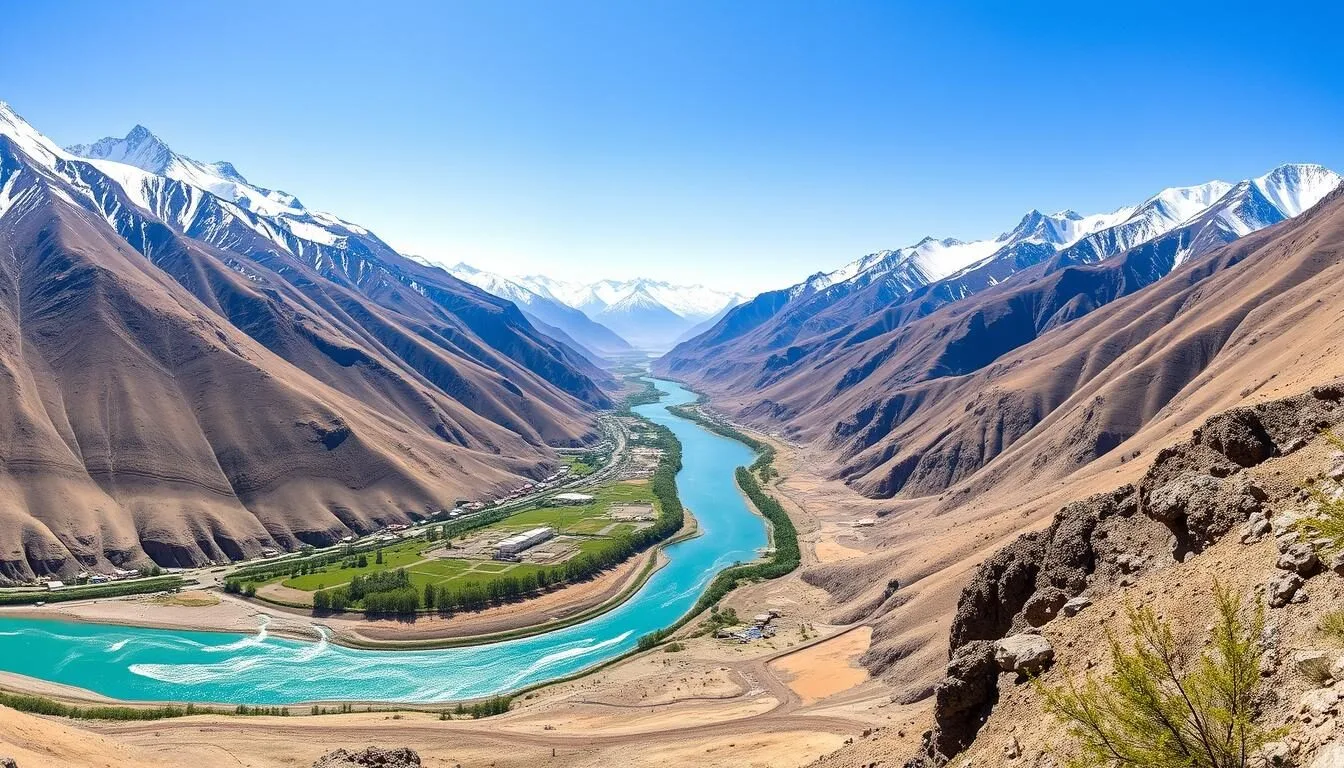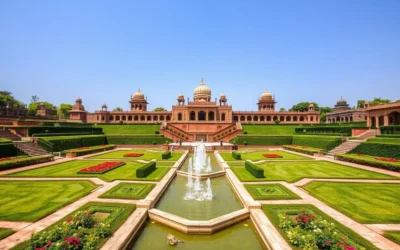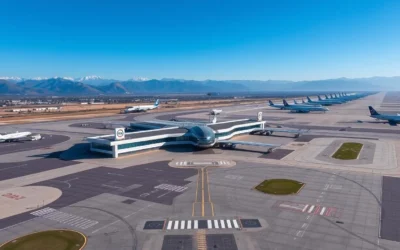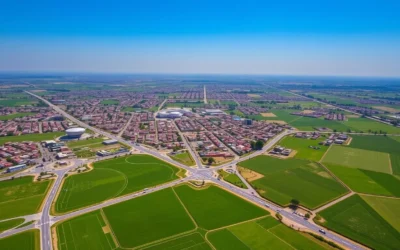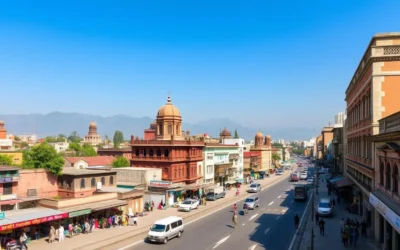✓ Accommodations✓ Flights✓ Rental Cars
Nestled in Pakistan’s northern Gilgit-Baltistan region, Skardu is home to the world’s second-highest plateau, Deosai National Park, which sits at a breathtaking 4,114 meters (13,497 feet) and transforms from a snow-covered wilderness in winter to a carpet of wildflowers in summer. This dramatic landscape shift epitomizes Skardu’s surreal beauty—a place where cold deserts meet alpine lakes, ancient forts overlook braided rivers, and some of the world’s highest peaks scrape the sky.
Skardu serves as the gateway to Pakistan’s most epic adventures, including expeditions to K2, the world’s second-highest mountain. But even if you’re not planning to scale these formidable peaks, Skardu offers a treasure trove of experiences that blend natural wonders with cultural richness. From sandboarding on high-altitude desert dunes to exploring centuries-old Buddhist rock carvings, this frontier town rewards travelers who venture beyond Pakistan’s more familiar destinations.
Ready to explore Skardu?
Start planning your journey to this Himalayan paradise with our trusted travel partners.
Getting to Skardu

Reaching Skardu is part of the adventure, with two main options available to travelers:
By Air
Flying is the most convenient way to reach Skardu, with Pakistan International Airlines (PIA) operating daily flights from Islamabad. The 45-minute journey offers spectacular views of the Karakoram and Himalayan ranges. However, flights are weather-dependent and cancellations are common, especially during winter months. Recently, flights from Lahore, Karachi, and other major Pakistani cities have been added, expanding access to this remote region.
By Road
The overland journey to Skardu is an adventure in itself. Two main routes are available:
Karakoram Highway Route
This route follows the legendary Karakoram Highway to Gilgit before turning onto the Gilgit-Skardu Road. The entire journey from Islamabad takes 18-20 hours, covering approximately 700 km of mountainous terrain. The road has been undergoing improvements but still presents challenging sections.
Deosai Plains Route
A more scenic but seasonal option (June-September) is via Astore and across the Deosai National Park. This route offers breathtaking landscapes but requires a 4×4 vehicle and takes approximately 20-22 hours from Islamabad.
Pro tip: If flying, book a window seat on the left side of the aircraft when heading to Skardu for the best mountain views. When returning, choose the right side.
Best Time to Visit Skardu
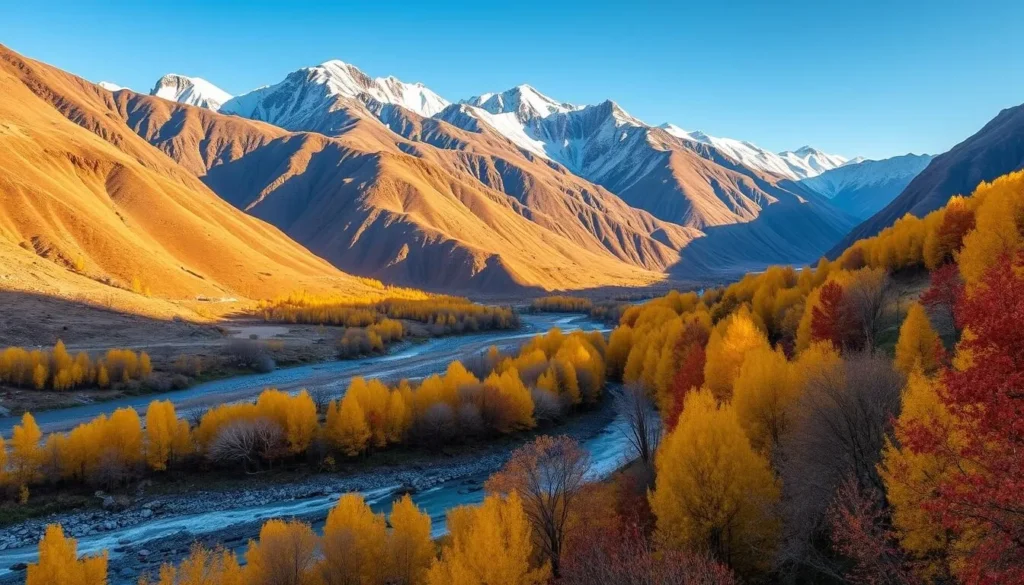
Skardu experiences distinct seasons, each offering a different perspective on this mountain paradise:
| Season | Months | Temperature | Conditions | Recommended For |
| Summer | June to August | 15°C to 30°C (59°F to 86°F) | Warm days, cool nights, occasional rain | Trekking, camping, all attractions open |
| Autumn | September to October | 5°C to 20°C (41°F to 68°F) | Clear skies, stunning fall colors | Photography, comfortable sightseeing |
| Winter | November to February | -10°C to 5°C (14°F to 41°F) | Snow, limited access, many facilities closed | Winter photography, experiencing local life |
| Spring | March to May | 5°C to 20°C (41°F to 68°F) | Blooming flowers, melting snow, occasional rain | Cherry blossoms, fewer tourists |
The ideal time to visit Skardu is from May to October when the weather is pleasant and all attractions are accessible. Summer (June-August) is peak tourist season with perfect conditions for trekking and outdoor activities. Autumn (September-October) offers spectacular foliage as apricot and poplar trees turn golden, creating a photographer’s paradise.
Winter in Skardu (November-February) is extremely cold with temperatures dropping well below freezing. Many accommodations lack proper heating, roads may be closed due to snow, and flights are frequently canceled. Unless you’re specifically seeking a winter experience, it’s best to avoid this season.
Getting Around Skardu
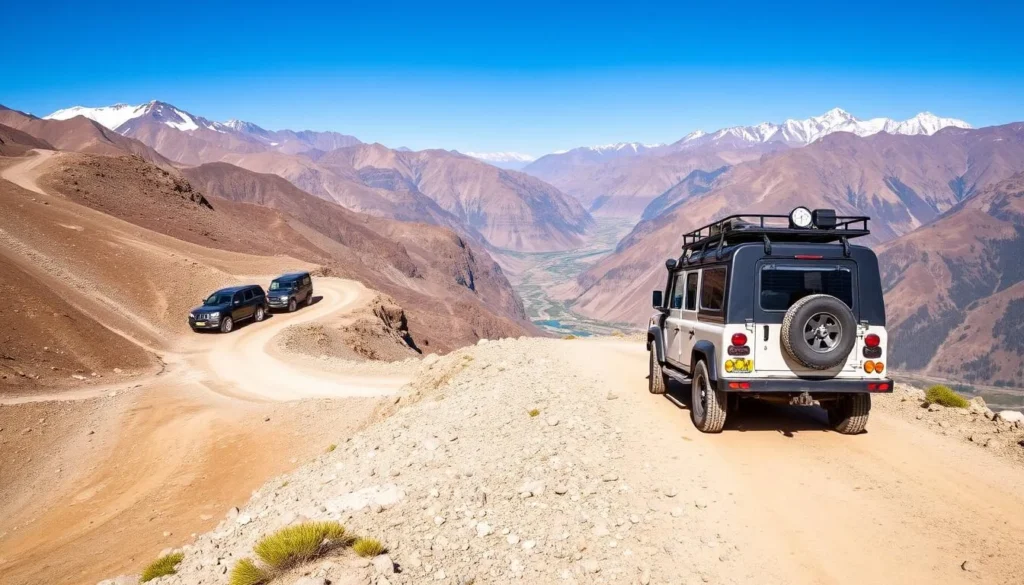
Navigating Skardu and its surrounding attractions requires some planning. Here are your options:
Within Skardu Town
- Taxis and auto-rickshaws are readily available for getting around the main town area
- Many guesthouses offer bicycle rentals for exploring the town at a leisurely pace
- The main bazaar area is compact enough to explore on foot
Exploring Surrounding Areas
- Hire a private car with driver for day trips (recommended for comfort and flexibility)
- Join organized tours from local operators for popular destinations
- 4×4 jeeps are essential for remote areas like Deosai Plains or Shigar Valley’s upper reaches
- Public transport (minivans) connects Skardu to nearby towns like Shigar and Khaplu but runs on irregular schedules
For the best experience, arrange transportation through your hotel or a reputable local tour operator. This ensures reliable vehicles suitable for the challenging mountain roads.
Need transportation in Skardu?
Rent a vehicle that can handle Skardu’s rugged terrain and mountain roads.
Top Attractions in Skardu: Best Things to Do
From otherworldly landscapes to cultural treasures, Skardu offers diverse experiences for every type of traveler. Here are the must-visit attractions and activities:
1. Explore the Cold Deserts: Katpana and Sarfaranga
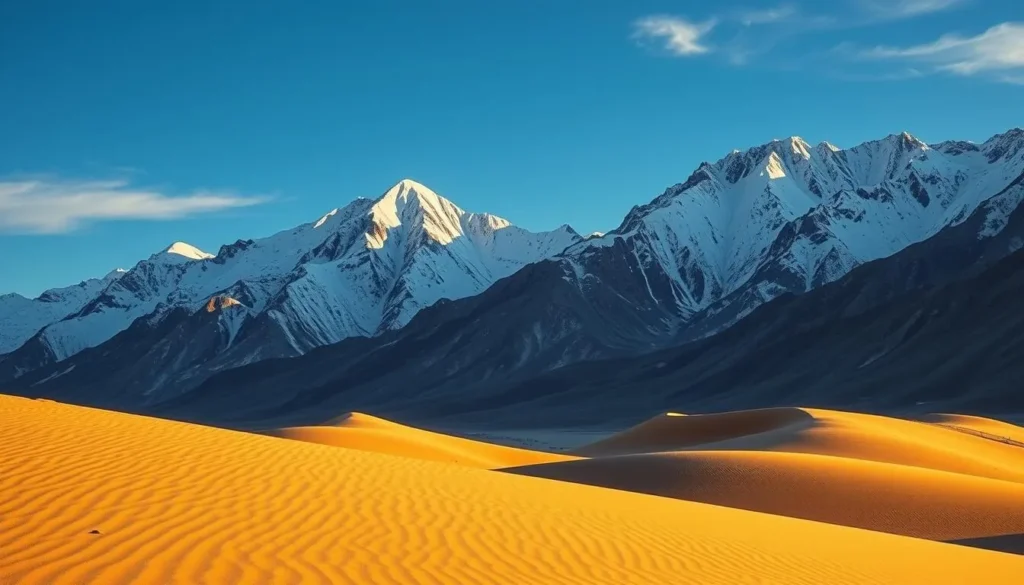
Experience the surreal landscape of Skardu’s cold deserts, among the highest in the world at 7,500 feet. The Katpana Desert, located near the airport, and the more dramatic Sarfaranga Desert offer otherworldly experiences where sand dunes exist alongside snow-capped mountains.
Katpana Desert
Closer to Skardu town and easier to access, Katpana Desert is perfect for a quick visit. In winter, the unusual phenomenon of snow-covered sand dunes can be witnessed here, earning it the nickname “Cold Desert.” The desert offers excellent stargazing opportunities due to minimal light pollution.
Sarfaranga Desert
Located in the Shigar Valley, Sarfaranga features more dramatic dunes and spectacular mountain backdrops. It’s the venue for the annual Sarfaranga Desert Jeep Rally. Adventure enthusiasts can try sandboarding down the dunes or take exhilarating jeep rides across this unique landscape.
Experience Desert Adventure
Book a guided tour of Skardu’s unique cold deserts with sandboarding and photography opportunities.
Book Desert Tour
2. Visit Upper and Lower Kachura Lakes
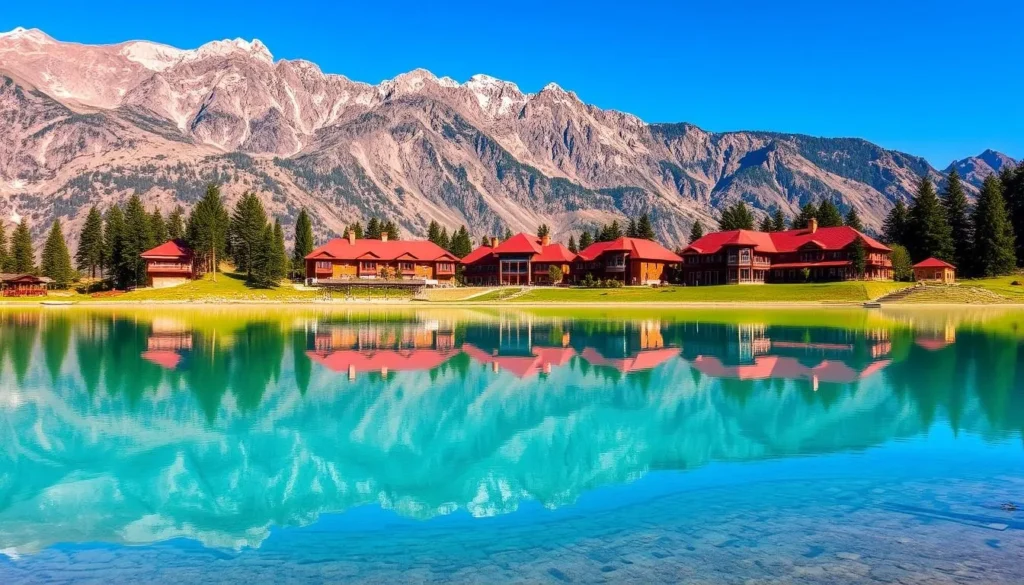
The twin Kachura Lakes offer tranquil beauty just 30-45 minutes from Skardu town:
Lower Kachura Lake (Shangrila Lake)
Home to the famous Shangrila Resort with its distinctive red-roofed buildings and an old aircraft converted into a restaurant. The lake’s emerald waters reflect the surrounding mountains, creating picture-perfect scenes that justify its nickname “Heaven on Earth.” Even if you’re not staying at the resort, you can visit for a meal or to enjoy the gardens.
Upper Kachura Lake
Less developed and more serene than its lower counterpart, Upper Kachura Lake is a 20-minute walk from Lower Kachura. Its crystal-clear waters are perfect for a refreshing swim in summer. Local restaurants serve fresh trout from the lake—a must-try delicacy. The surrounding pine forests and mountain views make this a perfect spot for a peaceful picnic.
3. Climb to Kharpocho Fort
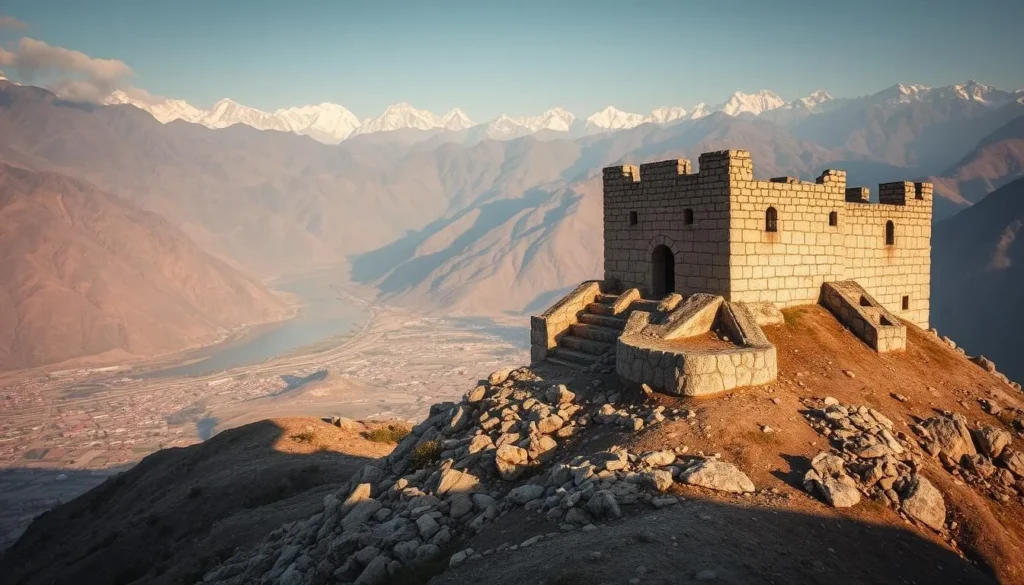
Perched dramatically on a rocky outcrop overlooking Skardu town and the Indus River, Kharpocho Fort (also known as Skardu Fort) offers a glimpse into the region’s strategic importance. Built in the 16th century by the Maqpon rulers, this historic fortress requires a moderately challenging 20-minute hike up a zigzagging path.
The fort itself is partially in ruins, but the panoramic views from the top are simply spectacular—encompassing the entire Skardu Valley, the braided Indus River, and the surrounding mountains. Visit in the early morning or late afternoon for the best light and photography opportunities. Behind the fort, you’ll find a hidden trail leading to the peaceful Organic Forest, a welcome patch of greenery in the otherwise arid landscape.
4. Discover Shigar Fort and Valley
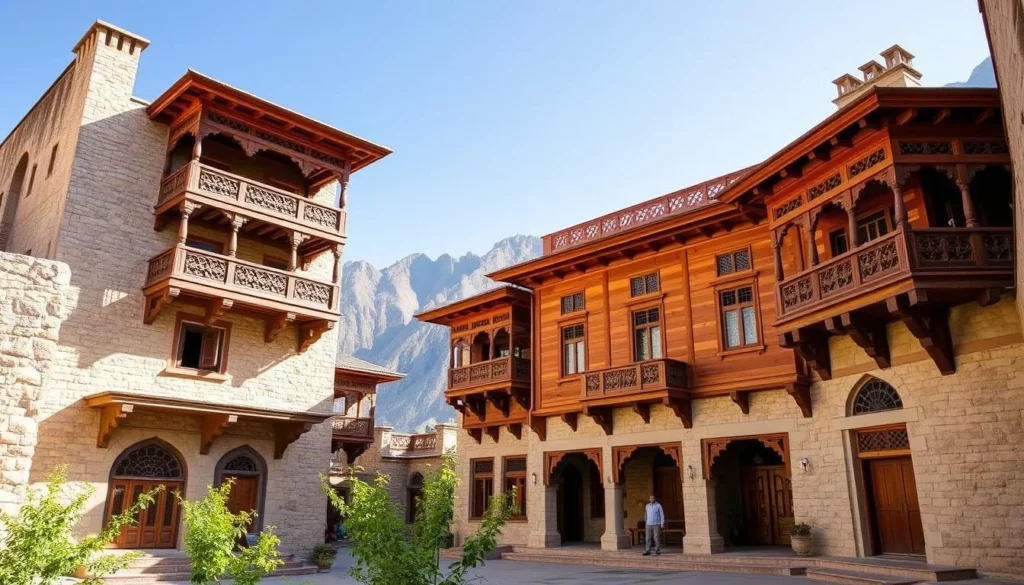
Just 32 km from Skardu lies the picturesque Shigar Valley, home to the beautifully restored 17th-century Shigar Fort. Converted into a museum and heritage hotel by the Aga Khan Trust for Culture, the fort showcases traditional Balti architecture with intricate woodwork and offers a fascinating glimpse into royal life in the region.
Beyond the fort, Shigar Valley is worth exploring for its traditional villages, terraced fields, and fruit orchards. The valley is famous for its delicious apricots and serves as the gateway to the mighty Karakoram range. Many expeditions to K2 and other major peaks begin their journey from here. Take time to wander through the ancient village surrounding the fort, where traditional Balti life continues much as it has for centuries.
Stay in a Historic Fort
Experience royal heritage by booking a night at the restored Shigar Fort, now operated as a boutique hotel.
5. Visit Deosai National Park

Often called the “Roof of the World,” Deosai National Park is the second-highest plateau in the world at 4,114 meters (13,497 feet). This vast alpine plain stretches over 3,000 square kilometers and transforms dramatically with the seasons—from a snow-covered wilderness in winter to a spectacular carpet of wildflowers in summer.
The park is home to the endangered Himalayan brown bear, along with ibex, red fox, golden marmot, and numerous bird species. The jewel of Deosai is Sheosar Lake, whose name translates to “Blind Lake” in the local language. Its crystal-clear waters perfectly reflect the surrounding mountains and sky.
Important: Deosai is only accessible from June to early October. A 4×4 vehicle is essential, and visitors should be prepared for rapidly changing weather. The park entrance fee is approximately 1,000 PKR for foreigners. Consider hiring a local guide who can help spot wildlife and explain the unique ecosystem.
6. Explore Khaplu Palace and Village

About 103 km from Skardu, the historic town of Khaplu is home to the exquisitely restored Khaplu Palace. Built in the 19th century, this former royal residence showcases the finest examples of Balti and Tibetan architecture with its intricate woodwork, carved balconies, and peaceful courtyards.
Now operated as a museum and heritage hotel by Serena Hotels, the palace offers guided tours that provide insight into the region’s royal history. Nearby, the 700-year-old Chaqchan Mosque combines Persian, Tibetan, and Kashmiri architectural elements, reflecting the cultural crossroads that Baltistan represents.
The surrounding Khaplu village is worth exploring for its traditional houses, terraced fields, and friendly locals. The area is also known for its exceptional apricots—try the local specialty of dried apricots stuffed with walnuts.
7. Marvel at Manthal Buddha Rock
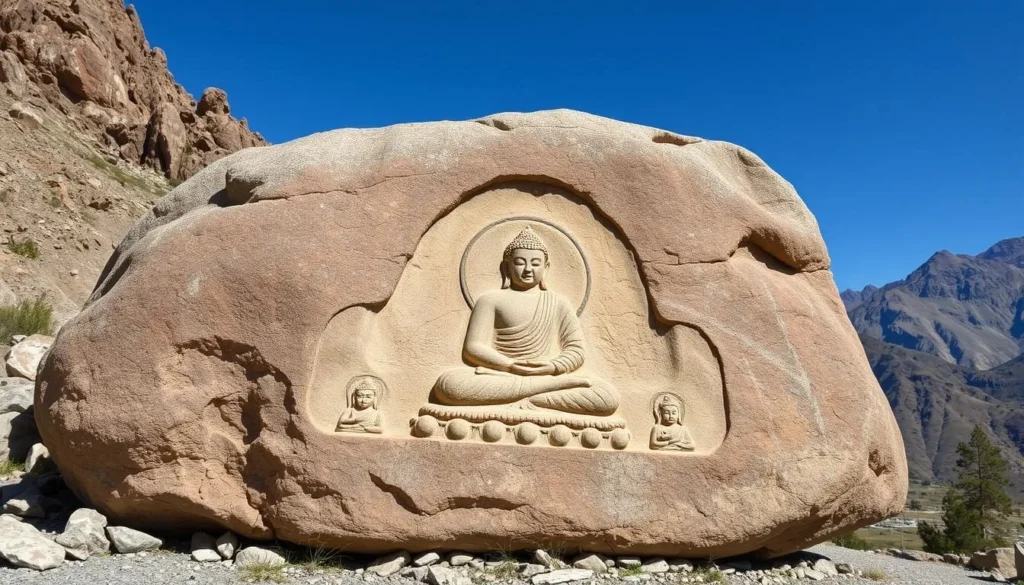
Just 3 km from Skardu town lies an important archaeological treasure—the Manthal Buddha Rock. This large granite boulder features an 8th-century carving of Buddha surrounded by smaller figures, offering a tangible reminder that Buddhism flourished in this region long before Islam became the dominant religion.
The carving has survived for over a thousand years and provides fascinating insight into the region’s rich cultural history as a crossroads between South and Central Asia. The site is easily accessible by car or taxi from Skardu town, and the modest entrance fee (around 150 PKR) helps with its preservation.
8. Experience Basho Valley
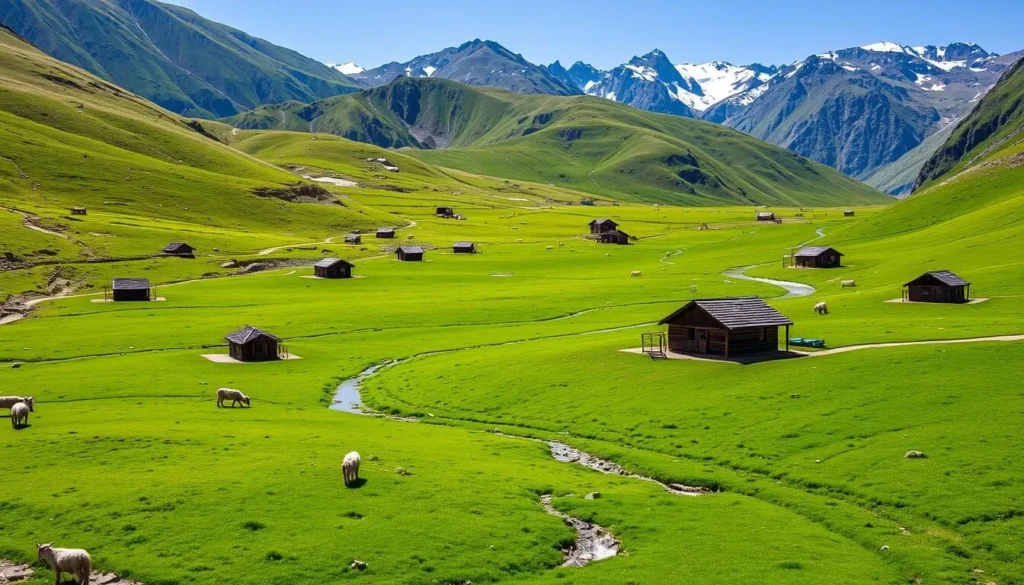
For a refreshing contrast to Skardu’s arid landscapes, head to the verdant Basho Valley. Located about 50 km from Skardu, this lush valley offers bucolic meadows, dense forests, and numerous waterfalls—earning it the nickname “Little Switzerland of Pakistan.”
The valley is perfect for day hikes, picnics, and experiencing traditional Balti village life. Local guesthouses offer simple accommodations for those wishing to stay overnight. The journey to Basho involves a somewhat challenging road, so a 4×4 vehicle is recommended, especially after rainfall.
Basho is particularly beautiful in spring when wildflowers carpet the meadows and in autumn when the forests display spectacular fall colors. The valley is also known for its delicious organic produce and honey.
9. Trek to Spectacular Viewpoints
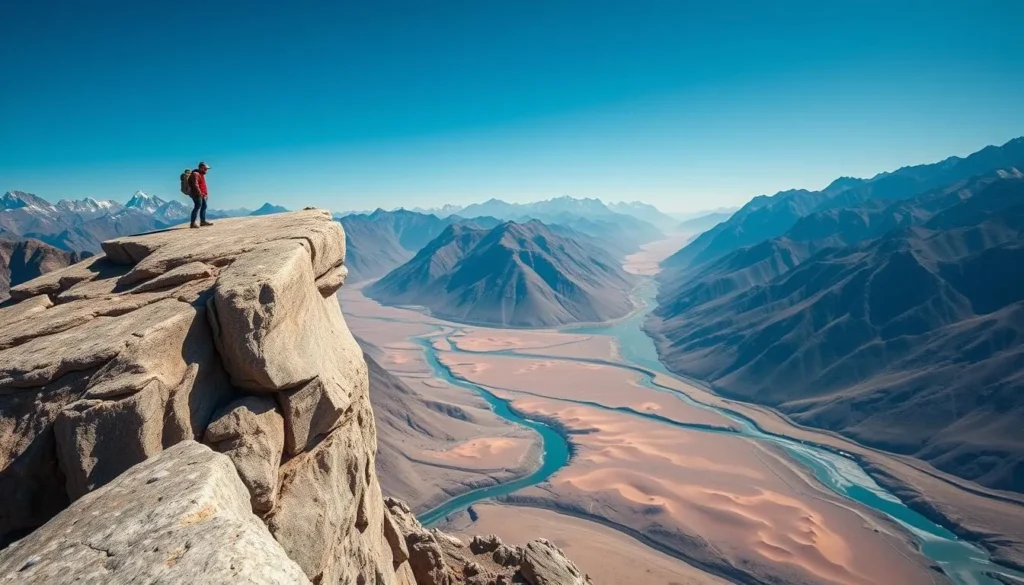
Skardu offers several rewarding treks to spectacular viewpoints that showcase the region’s dramatic landscapes:
Marsur Rock
Often compared to Norway’s Trolltunga, this precariously perched rock formation offers unbeatable views of Skardu Valley and the Indus River. The half-day trek involves approximately 600 meters of elevation gain and is best attempted in the early morning to avoid the midday heat. Some adventurous travelers camp overnight at the top to witness sunrise or sunset over the valley.
Moses Peak
For more experienced hikers, Moses Peak (5,300 meters) provides one of the best viewpoints in the entire region. On clear days, the 360-degree panorama includes views of K2, Nanga Parbat, and the Himalayan, Karakoram, and Hindu Kush ranges. The trek typically takes 2-3 days from Skardu and requires proper acclimatization due to the high altitude.
For any trekking in the Skardu region, it’s highly recommended to hire a local guide. Not only does this provide employment to the local community, but guides can help with navigation, carry emergency equipment, and share cultural insights that enrich the experience.
10. Shop in Skardu Bazaar

Skardu’s main bazaar offers an authentic shopping experience where you can find unique souvenirs and local specialties. The region is famous for its gemstones and minerals, with aquamarine, garnet, and ruby being particularly prized. Reputable shops like North Handicraft offer genuine stones at negotiable prices—remember that bargaining is expected and part of the experience.
Beyond gemstones, look for:
- Dried fruits and nuts, especially the region’s famous apricots
- Handwoven Balti carpets and textiles
- Traditional Balti caps and clothing
- Handcrafted wooden items
- Local honey and apricot oil products
The bazaar is also a great place to sample local street food, including Balti-style momos (dumplings) and the distinctive salty butter tea that helps locals stay warm in the mountain climate.
Where to Stay in Skardu
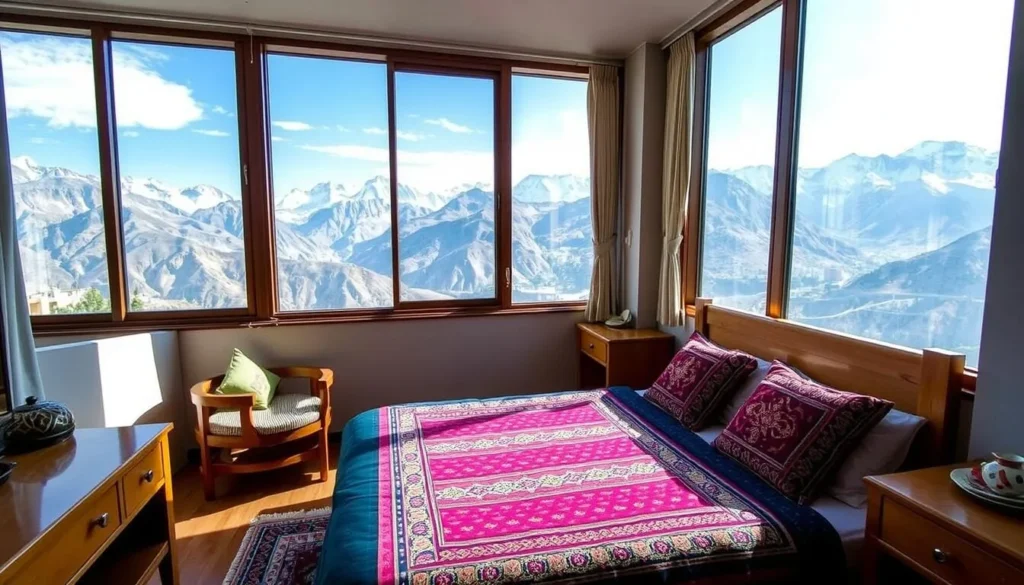
Skardu offers a range of accommodation options to suit different budgets and preferences:
Luxury Options
- Serena Shigar Fort – Experience royal heritage in this meticulously restored 17th-century fort turned luxury hotel
- Khaplu Palace – Another heritage property operated by Serena Hotels, offering an authentic royal experience
- Shangrila Resort – Iconic resort on Lower Kachura Lake with distinctive red-roofed cottages and beautiful gardens
Mid-Range Options
- Baltistan Continental Hotel – Comfortable rooms with modern amenities in a central location
- Mashabrum Hotel – Well-established hotel with mountain views and reliable service
- Indus Motel – Clean, comfortable rooms with a restaurant serving good local cuisine
Budget Options
- Snowland Guest House – Simple but clean rooms with friendly service
- K2 Motel – Basic accommodations popular with trekkers and budget travelers
- Concordia Motel – Affordable option with helpful staff who can arrange local tours
For the best experience, consider staying outside the dusty center of Skardu town. Properties just 5-10 minutes from the bazaar offer much more peaceful surroundings and often better views.
Find Your Perfect Stay in Skardu
From heritage forts to comfortable guesthouses, book accommodations that match your style and budget.
Practical Tips for Visiting Skardu

Essential Information
Language
Balti is the local language, but Urdu is widely understood. English is spoken in tourist areas and hotels but less common in remote villages. Learning a few basic Balti phrases will be appreciated by locals.
Currency
Pakistani Rupee (PKR) is the local currency. ATMs are available in Skardu town but can be unreliable, so bring sufficient cash. Credit cards are accepted only at high-end hotels and some tour operators.
Health and Safety
- Altitude Sickness: Skardu sits at 2,438 meters (8,000 feet), with many attractions at even higher elevations. Take time to acclimatize and stay hydrated to prevent altitude sickness.
- Water: Drink only bottled or properly purified water. Avoid ice in drinks unless you’re sure it’s made from purified water.
- Sun Protection: The mountain sun is intense, even on cloudy days. Wear high-SPF sunscreen, sunglasses, and a hat.
- Medical Facilities: Basic medical facilities are available in Skardu town, but for serious issues, evacuation to Islamabad may be necessary. Bring any essential medications and a basic first-aid kit.
Communication
Mobile coverage is available in Skardu town and major tourist areas but can be patchy in remote locations. Zong and Telenor generally offer the best coverage in the region. Wi-Fi is available at most hotels but tends to be slow and unreliable. Download maps, translation apps, and any essential information before your trip.
Cultural Considerations
- Dress modestly, especially when visiting religious sites or villages. Both men and women should cover shoulders and knees.
- Ask permission before photographing local people, especially women.
- Remove shoes when entering homes or religious buildings.
- Public displays of affection are frowned upon.
- During Ramadan, be respectful by not eating, drinking, or smoking in public during daylight hours.
Do I need a special permit to visit Skardu?
No special permit is required for Pakistani nationals or foreign tourists to visit Skardu and most nearby attractions. However, trekking to certain areas like K2 Base Camp or crossing certain mountain passes may require trekking permits. These can be arranged through registered tour operators in Skardu.
Is Skardu safe for tourists?
Skardu is generally very safe for tourists, with low crime rates and hospitable locals. The main safety concerns are related to natural hazards like altitude, weather changes, and challenging terrain rather than security issues. As with any destination, exercise normal precautions and respect local customs.
What should I pack for a trip to Skardu?
Essential items include: layers of clothing (temperatures can vary dramatically between day and night), good hiking boots, sun protection (hat, sunglasses, high-SPF sunscreen), a quality camera for the spectacular landscapes, basic medications and first-aid supplies, a reusable water bottle with purification tablets or filter, and a power bank (electricity can be unreliable). In winter, bring serious cold-weather gear including thermal layers and a heavy jacket.
Experience the Magic of Skardu
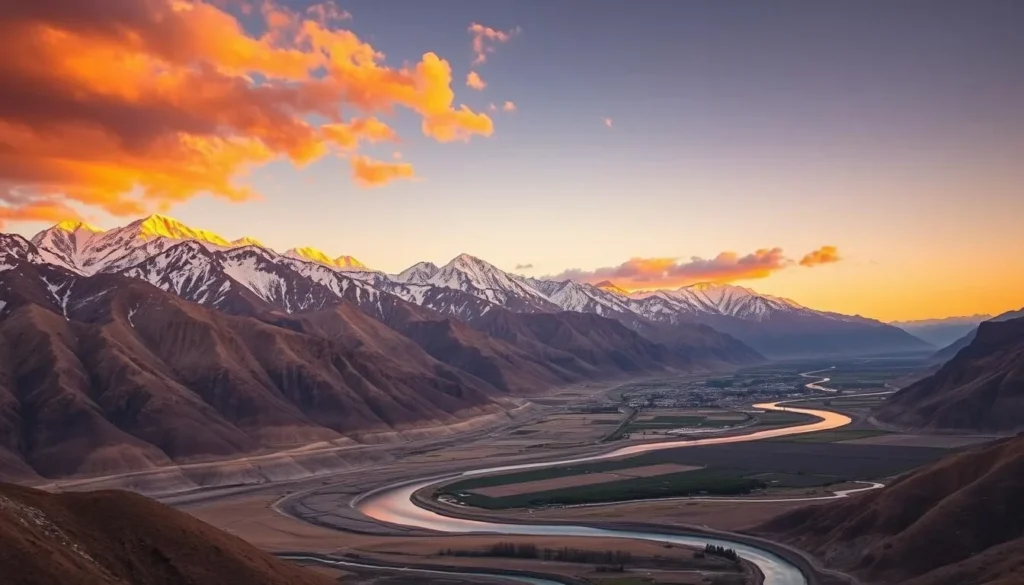
Skardu represents Pakistan at its most spectacular—a land where nature’s grandeur meets rich cultural heritage. From the surreal landscapes of cold deserts and turquoise lakes to ancient forts and Buddhist relics, this remote mountain paradise offers experiences that will linger in your memory long after you’ve returned home.
Whether you’re seeking adventure on epic treks, cultural immersion in traditional Balti villages, or simply the peace that comes from being surrounded by some of the world’s most majestic mountains, Skardu delivers in abundance. The journey may require some effort, but those who make it are rewarded with landscapes few travelers ever witness and the warm hospitality of mountain people who have preserved their unique way of life for centuries.
Ready to discover Skardu?
Start planning your journey to this extraordinary mountain paradise today.
Browse Accommodations
Explore Tours
—
The above is subject to change.
Check back often to TRAVEL.COM for the latest travel tips and deals.
